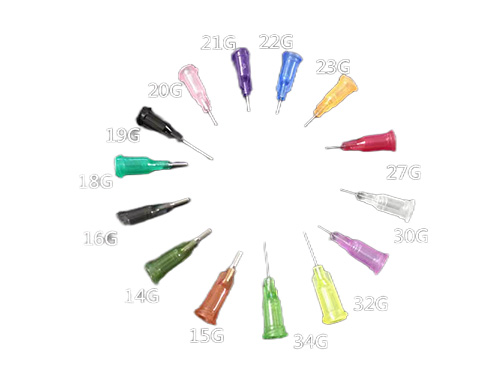Comparison of Different Types of Seed Tray Seeders: How to Choose the Most Suitable Equipment?
2025-01-02 21:56:04
In modern agricultural production, selecting an efficient and reliable seed tray seeder can significantly increase crop yield, save time and cost, and enhance seed germination rates and resistance to adverse conditions. However, with a wide variety of seed tray seeders available on the market, choosing the most appropriate device to meet your specific needs is a challenge every agricultural producer faces. This article will compare different types of seed tray seeders, helping you select the right equipment to improve production efficiency, reduce costs, and achieve sustainable development.
1. Classification of Seed Tray Seeders
Seed tray seeders can be divided into the following categories: manual planters, semi-automatic planters, fully automatic planters, and smart planters. Each type has distinct features, advantages, and suitable applications.
2. Comparison of Different Types of Seed Tray Seeders
1. Manual Planters
Characteristics:
Manual seed tray seeders are typically the most basic and cost-effective choice. They rely on human operation and have a simple structure.
Advantages:
· Low cost, ideal for small-scale planting or budget-constrained scenarios.
· Easy for farmers to learn and operate, with intuitive handling.
Disadvantages:
· High labor intensity, lower efficiency.
· Not suitable for large-scale production, prone to issues such as uneven seeding density and low germination rates.
Suitable Applications:
· Small farms
· Initial experimental planting projects
· Budget-conscious projects
Recommended Users:
· Small farms with limited budgets
· Individual farmers
· Small-scale agriculture introducing planting equipment for the first time
2. Semi-Automatic Planters
Characteristics:
Semi-automatic seed tray seeders combine the benefits of manual labor and automation. The equipment can partially automate the seeding process but still requires human assistance.
Advantages:
· Moderate cost, offering good cost-performance ratios.
· Higher production efficiency, saving some labor costs.
Disadvantages:
· Still requires manual support, higher operational complexity.
· Higher long-term maintenance costs.
Suitable Applications:
· Medium and small agricultural cooperatives
· Larger seed factories
Recommended Users:
· Farm owners seeking higher production efficiency with a limited budget
3. Fully Automatic Planters
Characteristics:
Fully automatic seed tray seeders are entirely controlled by mechanical and automated systems, efficiently performing seeding, seed tray filling, and density adjustment operations.
Advantages:
· High automation, saving a significant amount of labor.
· Faster seeding speed, higher germination rates, and better production efficiency.
· Precise control of seeding density and depth, reducing seed waste.
Disadvantages:
· Higher initial investment cost.
· Requires professional technical maintenance and regular inspections.
Suitable Applications:
· Large-scale production factories
· Large agricultural cooperatives
Recommended Users:
· Farm owners pursuing high efficiency, high yield, and having a reasonable budget
4. Smart Planters
Characteristics:
Smart seed tray seeders integrate advanced technologies such as artificial intelligence, the Internet of Things, and big data, offering features like remote monitoring, data analysis, and remote control.
Advantages:
· Remote control and automated monitoring improve operational efficiency and accuracy.
· Data analysis and AI adjustments better adapt to crop needs and climate changes.
· Lower resource waste and greater sustainability.
Disadvantages:
· Higher equipment costs, requiring advanced technical support and maintenance.
Suitable Applications:
· Large-scale industrial agriculture
· High-end seed factories
· Research institutions
Recommended Users:
· Efficient agricultural enterprises focused on data-driven production management, eco-friendliness, sustainability, and technological upgrades.
3. How to Choose the Most Suitable Seed Tray Seeder?
1. Analyze Your Production Scale and Needs
Based on your planting scale, choose your planter:
· Small-Scale Planting: Manual or semi-automatic planters are suitable.
· Medium-Scale Planting: A semi-automatic planter can meet the demand.
· Large-Scale Industrial Planting: Opt for a fully automatic or smart planter.
2. Consider Cost and Budget
When selecting a planter, weigh the initial investment against long-term costs:
· Low Initial Investment but High Maintenance Costs: Choose a semi-automatic planter.
· High Initial Investment with Simple Maintenance and High Efficiency: Choose a fully automatic or smart planter.
3. Technical Support and Maintenance Needs
Advanced automation and smart equipment require more specialized technical support.
When selecting a supplier, consider whether they offer long-term after-sales service, technical training, and equipment maintenance support.
4. Adaptation to Crop and Climate Conditions
Different regions and crop types have varying requirements for planters:
· For Tropical and Cold-Climate Crops: Seeding density and depth requirements may differ.
· Based on Climate Conditions: Choose planters that offer strong adaptability and durability.
4. Successful Case Studies
Case 1: North American Large-Scale Seed Factory
In North America, a large seed factory utilizes a fully automatic planter system. The high degree of automation allows it to fill and seed thousands of seed trays per hour while maintaining high germination rates and seed health.
Case 2: Shared Semi-Automatic Planter in Chinese Cooperatives
In several cooperatives in China, cooperative members share semi-automatic seed tray seeders. This sharing model effectively reduces initial equipment costs while improving production efficiency. The cooperative system not only saves costs but also fosters technical knowledge exchange.
5. Conclusion
When selecting a seed tray seeder, consider multiple factors such as production scale, budget, technical expertise, and crop type.
· Manual Planters: Suitable for small-scale planting.
· Semi-Automatic Planters: Best for medium-scale production.
· Fully Automatic and Smart Planters: Designed for large-scale, high-efficiency production.
If you want to learn more about customized seeding equipment solutions, contact us. We offer tailored, cost-effective, and sustainable seed tray seeder recommendations and services, helping you achieve higher yields, eco-friendly practices, and smarter, more sustainable agricultural production.

It adopts electrical integration and can be started by pressing the fully automatic button ...

The XP750 seeder has stable performance, excellent product quality, simple and convenient o...

It adopts electrical integration and can be started by pressing the fully automatic button ...

Needle list Seed nozzle model Different models Sowing types are different...



